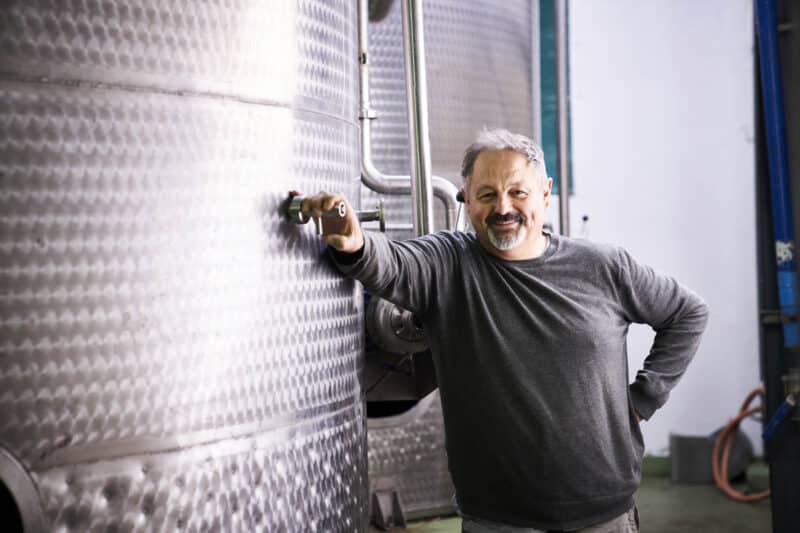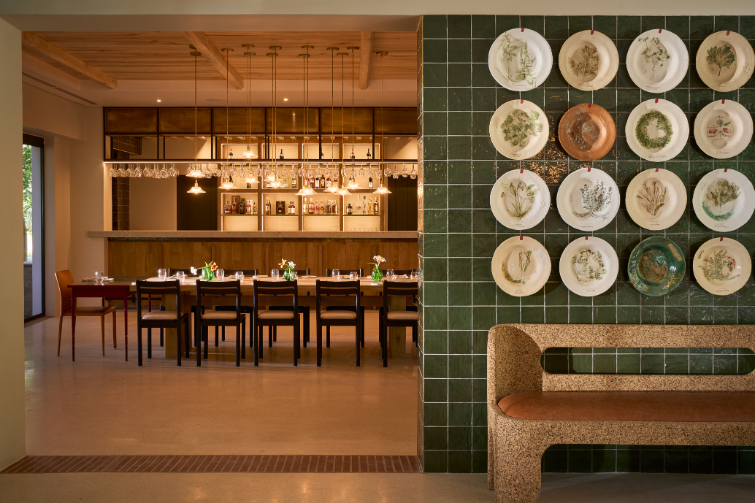Regenerative agriculture is not just about sustaining the environment, but about pro-actively healing it through farming practices that leave the ecosystem in a better condition than it was found.
At Hartenberg Wine Estate, regeneration efforts have been ongoing for decades. In 1995, a decade-long process was launched to remove alien vegetation from the property’s 65 ha wetland area. This has led to the return of indigenous flora and fauna, including 130 different bird species, small antelope such as duiker and steenbuck, as well as caracal, Cape fox and black-backed jackals. It has also resulted in increased soil water levels and longer run-offs after rain.
Cellarmaster and production director Carl Schultz answered some questions about the farm’s regenerative practices.

Hartenberg Cellarmaster and production director Carl Schultz.
1. How did biodiversity and regenerative agriculture become so important to you?
The realization that if we continue on the conventional path of farming we would not be contributing to the long term health of Hartenberg and the greater area we function in. The company motto is to leave the Estate in a better condition than we started with.
2. What are the key components of regenerative agriculture on a wine farm?
The key components of this philosophy are as follows: 1. Minimising soil disturbance 2. maximising crop diversity 3. eliminating bare soils 4. Encouraging living roots 5. Integrating livestock/animals.
As an example, controlled grazing has multiple benefits that free grazing does not have. Controlled grazing allows for the even distribution of the “by-products” (urine, defecant and saliva) of livestock throughout the vineyard parcel being grazed. It also avoids the important negative of soil compaction. By controlling grazing, livestock are shifted at a pre-determined plant grazing height. This ensures the possibility of re-growth sufficiently to allow further grazing.
3. How long have you been investigating and applying these principles yourself?
Unknowingly both [viticulturist] Wilhelm Joubert and I have been raised and schooled in an idea of thought that includes conservation, a holistic approach in the engagement with the environment and great respect for nature. Almost three decades ago conservation of water, fauna and flora was absorbed into how we farm at Hartenberg, be it clearing of alien vegetation, soil erosion management, mulching, use of cover crops and allowing the natural, endemic flora to re-populate not just the fringes and perimeters of vineyard parcels, but also in vineyards.
4. Is it an approach reserved only for a privileged few or can anyone convert their farm this way?
Anyone can convert their farm on this way. It takes more conviction than money to achieve this.
Multi-species cover cropping is pivotal and the foundation stone of the philosophy. Mulching of bare soils, especially undervine and conversion of chemical pest control to biological control, using beneficial insects, are also good ways get going.
By employing a strategy of multi-species cover cropping, [the proliferation of] alien vegetation and weeds generally are suppressed. The presence of alien vegetation re-growth within our 58 ha wetland, peripheral belts of natural vegetation and between vineyard parcels are constantly being monitored and on detection, removed.
5. Does soil biodiversity affect the characteristics or flavour of the wine?
Without a doubt, yes. Vines and so wines have the innate ability to reflect site, to exhibit a sense of place. A perfect, functioning example at Hartenberg would be the two sister vineyards of Gravel Hill and The Stork. Only a few hundred metres apart, dramatically contrasting soils have resulted in quite unrelated wines – one grape, two expressions.













